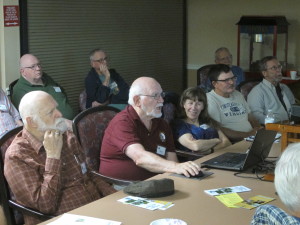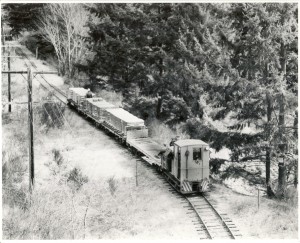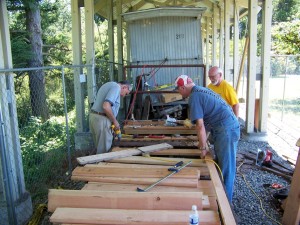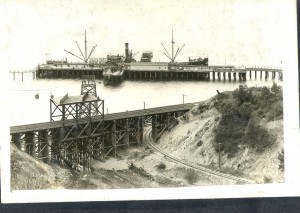Rich Blake
This past September 9th clinic officially started our railroad modeling clinic season for the island dwellers way up north. We had 21 folks in attendance and welcomed some “mainlanders” – namely 4D Superintendent Russ Segner and 4D Membership Chair Bob Rorabaugh. After our usual clinic opening business, Rich Blake gave the floor to Bob who talked briefly about how we as NMRA members can help to share the hobby with “train curious” people at shows and hobby shops. There are many recruitment opportunities out there to help us grow the hobby and membership base but it takes everyone as a team to act on those opportunities to get folks to take the next step. Bob handed out some NMRA business cards that folks could fill out with their contact information. He also provided examples of using old modeling magazines as a vehicle to provide information by stapling an information brochure to it and giving it to someone who may be interested. Good ideas were shared and discussed and at a good time because if you haven’t noticed, most of our core membership is not getting any younger!
We then rolled into our main presentation by Russ which was on the subject of the Dupont Narrow Gauge Dynamite railroad. This was a very interesting little 36” gauge railroad originally used to haul explosive products from a powderworks plant to a wharf and interchange with mainline railroads. The plant was used extensively during WWI and WWII and even into the Vietnam era for supporting military ammunition needs. Explosives were also used in great amounts to blow up the millions of stumps around Puget Sound and all up and down the west coast during the big booming logging period and subsequent construction expansion efforts. The plant also served to supply explosives for major construction projects like the Grand Coulee Dam and the Panama Canal.
In 1977 all the property and equipment was sold to the Weyerhaeuser company. Weyerhaeuser intended to use the site as a logging dump but due to environmental issues it never happened. The original site is now a golf course and most of the equipment was relocated near the Ft. Lewis military museum.
Russ along with other 4D members Jim Sabol and Roger Nulton, are very active in the volunteer restoration efforts of the remaining Dupont rail equipment. Many of the original items are in dire need of repair and Russ showed many detailed photos of the fabrication and assembly of the various pieces of rolling stock. For many of the items it looked Russ and group were building a 1:1 craftsman kit and Russ’ photos allowed everyone to see many equipment fitment details that are not normally visible on the finished product. Many parts were completely rotted away and a lot of effort went into documenting, measuring and drawing out plans to re-fabricate the missing items. All of Russ’ photos of the restored equipment along with historical photos of boxcars and other unique items would be excellent narrow gauge modeling projects.
Russ also showed photos of the restored 12 ton Plymouth locomotive that still runs at the museum. He also showed many historical photos with a wonderful scene of the original wharf where the rail traversed under the Northern Pacific mainline. This entire line just begs to be modeled in a micro-layout or modular exhibition layout.
It was a fun and informative clinic and a big thanks goes out to Russ and Bob for making the journey up to lonely Whidbey Island. For more information on the Dupont railroad (and how to volunteer for the museum) see this website:






No Comments Yet